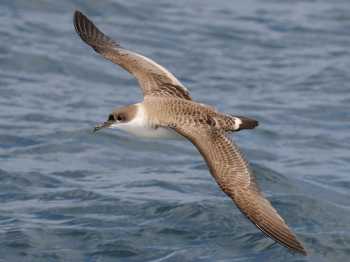Yan Li (Department of Fish and Wildlife Conservation, Virginia Polytechnic Institute and State University, Blacksburg, Virginia, USA) and colleagues have published open access in the Bulletin of Marine Science as part of the Proceedings of the International Symposium on Circle Hooks. Their paper looks at whether circle hooks are better for seabirds in the USA's pelagic longline fishery in the North Atlantic. Birds caught included Great Shearwaters Puffinus gravis and a Cory's Shearwater Calonectris diomedea.
The paper's abstract follows:
"Recent studies suggest that use of circle hooks can reduce the incidental mortality of some marine fishes and sea turtles in longline fisheries. Analysis of data from the US National Marine Fisheries Service Pelagic Observer Program (POP) revealed a significant hook effect on seabird bycatch. Our analysis focused on the three areas with highest seabird bycatch, the northeast US coast (60°W-71°W, 35°N-42°N), the Middle Atlantic Bight (71°W-82°W, 35°N-41°N), and the South Atlantic Bight (71°W-82°W, 30°N-35°N). We developed two generalized linear models to examine effects of four hook treatments, i.e., four combinations of hook type and size (8/0 J-hook, 9/0 J-hook, 16/0 circle hook, and 18/0 circle hook), on: (1) the probability of catching seabirds on a set and (2) the positive catch rate (i.e., number of seabirds per 1000 hooks in longline sets with at least one seabird caught). Results indicated that combinations of hook type and size significantly influenced the probability of catching seabirds in the United States Atlantic pelagic longline fishery. Use of the 8/0 J-hook led to the highest probability of catching a seabird. Use of circle hooks may significantly reduce seabird bycatch in the US Atlantic pelagic longline fishery, but its effectiveness may be confounded by other factors such as bait type, fishing location, season, and target species. Results of our study were limited by the small number of seabird captures in the POP data."

Great Shearwater. Photograph by John Graham
Reference:
Li, Y., Browder, J.A. & Jiao, Y. 2012. Hook effects on seabird bycatch in the United States Atlantic pelagic longline fishery. Bulletin of Marine Science 88: 559-569.
John Cooper, ACAP Information Officer, 16 August 2012

 English
English  Français
Français  Español
Español